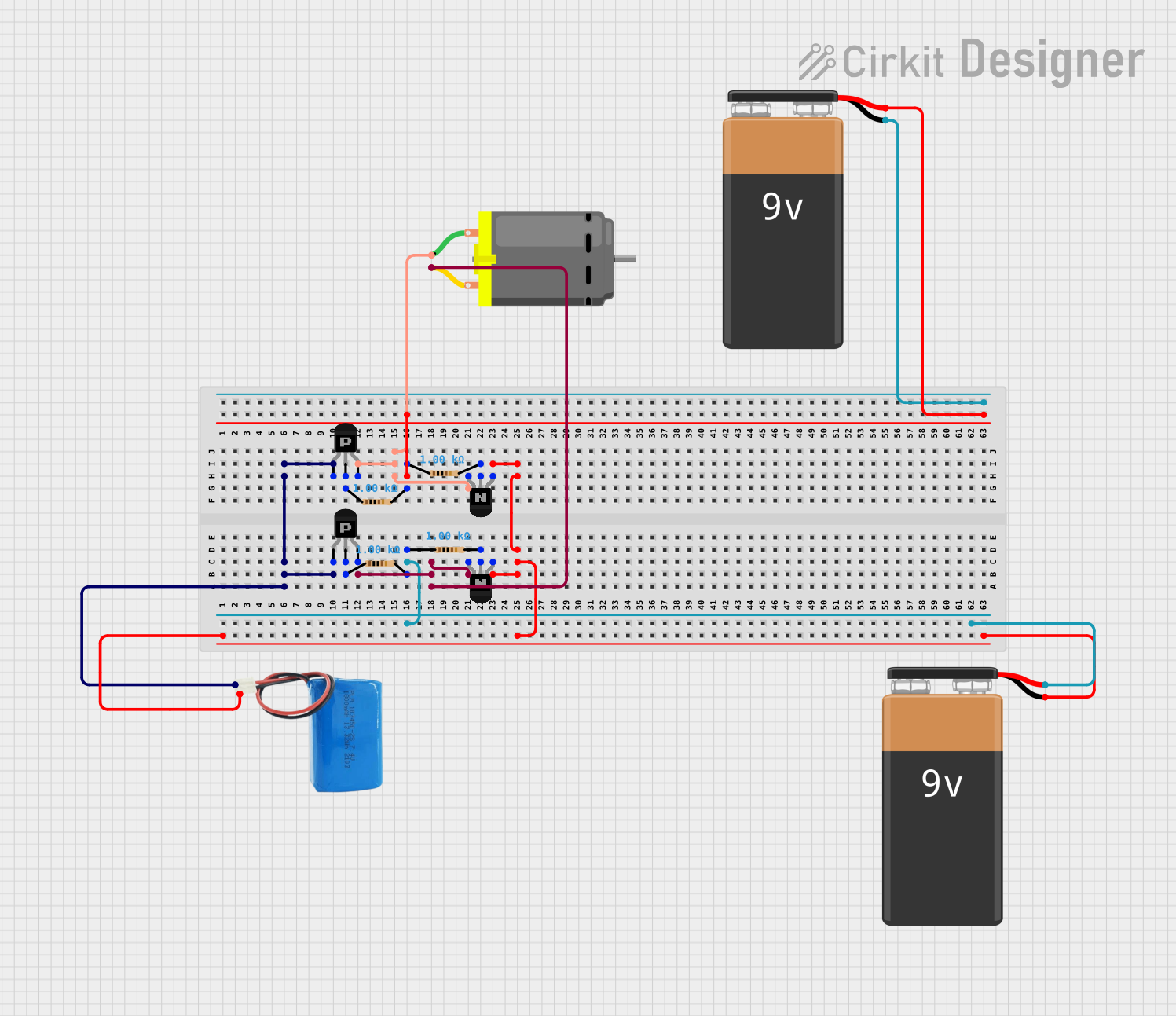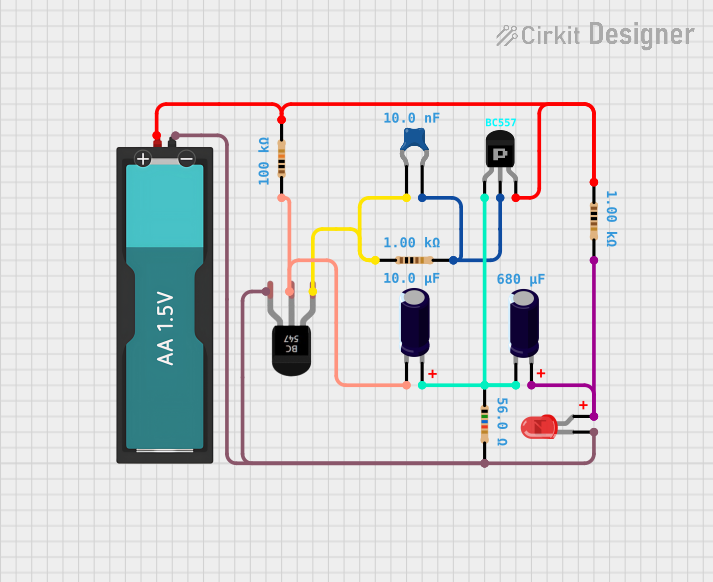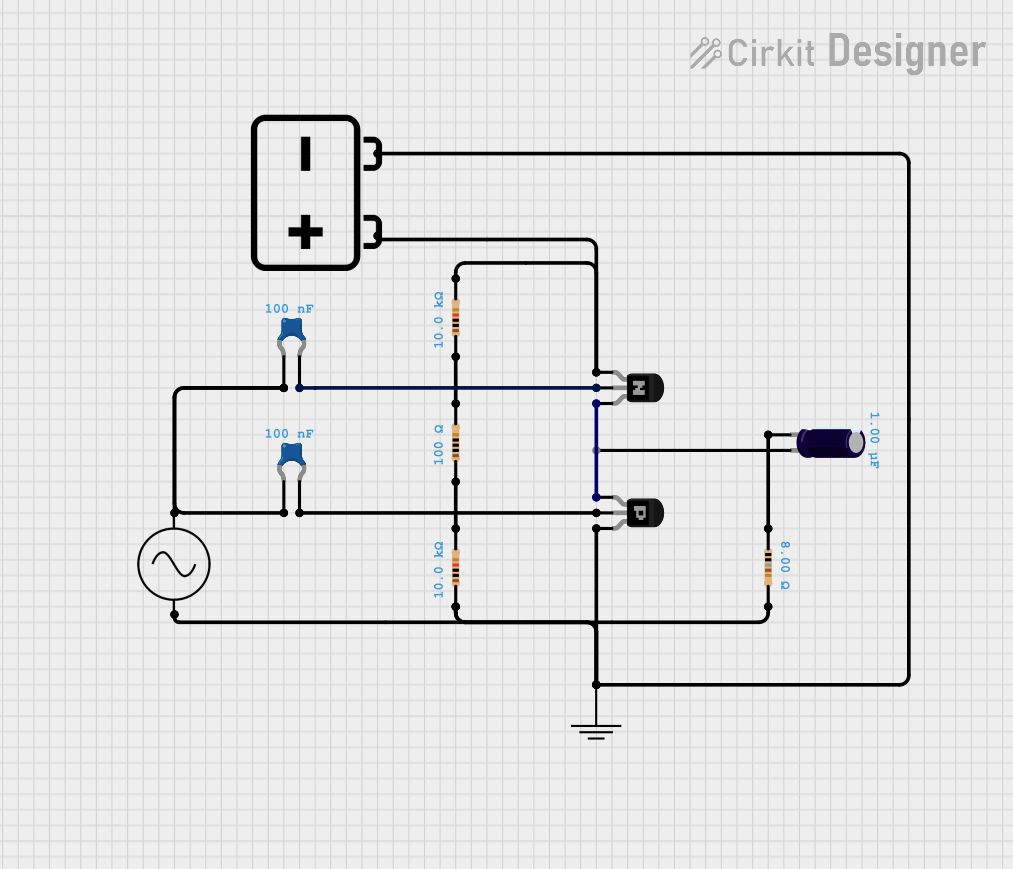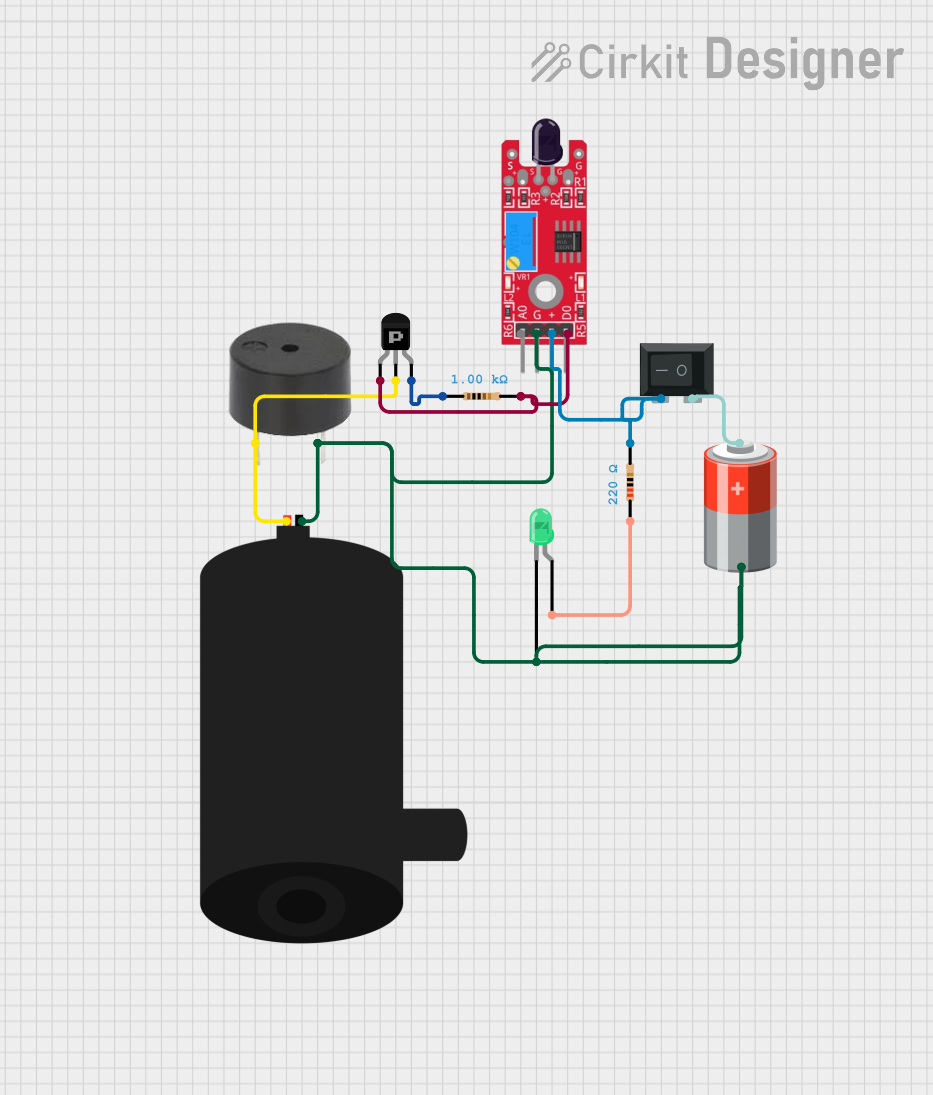
How to Use PNP: Examples, Pinouts, and Specs

 Design with PNP in Cirkit Designer
Design with PNP in Cirkit DesignerIntroduction
A PNP transistor is a type of bipolar junction transistor (BJT) that allows current to flow from the emitter to the collector when a small current is applied to the base. Unlike an NPN transistor, the PNP transistor is activated when the base is at a lower voltage than the emitter. It is widely used in electronic circuits for switching and amplification purposes.
Explore Projects Built with PNP

 Open Project in Cirkit Designer
Open Project in Cirkit Designer
 Open Project in Cirkit Designer
Open Project in Cirkit Designer
 Open Project in Cirkit Designer
Open Project in Cirkit Designer
 Open Project in Cirkit Designer
Open Project in Cirkit DesignerExplore Projects Built with PNP

 Open Project in Cirkit Designer
Open Project in Cirkit Designer
 Open Project in Cirkit Designer
Open Project in Cirkit Designer
 Open Project in Cirkit Designer
Open Project in Cirkit Designer
 Open Project in Cirkit Designer
Open Project in Cirkit DesignerCommon Applications and Use Cases
- Switching Circuits: Used to control high-current devices like motors or LEDs.
- Signal Amplification: Amplifies weak signals in audio and RF circuits.
- H-Bridge Motor Drivers: Works in conjunction with NPN transistors for bidirectional motor control.
- Current Sources: Provides a stable current in various circuit designs.
Technical Specifications
Below are the general technical specifications for a typical PNP transistor. Note that specific values may vary depending on the model (e.g., 2N2907, BC557).
Key Technical Details
- Type: Bipolar Junction Transistor (PNP)
- Polarity: PNP
- Voltage Ratings:
- Collector-Emitter Voltage (VCE): Typically 40V to 60V
- Collector-Base Voltage (VCB): Typically 50V to 80V
- Emitter-Base Voltage (VEB): Typically 5V to 7V
- Current Ratings:
- Maximum Collector Current (IC): Typically 100mA to 800mA
- Power Dissipation: Typically 500mW to 1W
- Gain (hFE): Typically 100 to 300
- Package Types: TO-92, TO-220, SOT-23, etc.
Pin Configuration and Descriptions
The PNP transistor typically has three pins: Emitter (E), Base (B), and Collector (C). Below is the pin configuration for a common TO-92 package.
| Pin Number | Name | Description |
|---|---|---|
| 1 | Emitter (E) | Current flows out of this pin. |
| 2 | Base (B) | Controls the transistor's operation. |
| 3 | Collector (C) | Current flows into this pin when the transistor is active. |
Usage Instructions
How to Use the Component in a Circuit
Biasing the Transistor:
- Connect the emitter to the positive voltage supply.
- Connect the collector to the load (e.g., resistor, motor, or LED).
- Apply a small current to the base to activate the transistor. Ensure the base voltage is lower than the emitter voltage by approximately 0.6V to 0.7V (for silicon transistors).
Switching Applications:
- Use the PNP transistor as a high-side switch. When the base is pulled low, the transistor allows current to flow from the emitter to the collector, powering the load.
Amplification Applications:
- Use the transistor in a common-emitter configuration for signal amplification. Connect a resistor to the collector and a biasing network to the base.
Important Considerations and Best Practices
- Base Resistor: Always use a resistor in series with the base to limit the base current and prevent damage to the transistor.
- Heat Dissipation: Ensure proper heat dissipation if the transistor operates near its maximum power rating.
- Polarity: Double-check the polarity of the connections, as reversing the emitter and collector can damage the transistor.
- Voltage Ratings: Do not exceed the maximum voltage ratings for VCE, VCB, or VEB.
Example: Using a PNP Transistor with Arduino UNO
Below is an example of using a PNP transistor to control an LED with an Arduino UNO.
// Example: Controlling an LED with a PNP transistor and Arduino UNO
const int ledPin = 9; // Arduino pin connected to the base of the PNP transistor
const int baseResistor = 1000; // Base resistor value in ohms
void setup() {
pinMode(ledPin, OUTPUT); // Set the pin as an output
}
void loop() {
digitalWrite(ledPin, LOW); // Turn on the LED (base pulled low)
delay(1000); // Wait for 1 second
digitalWrite(ledPin, HIGH); // Turn off the LED (base pulled high)
delay(1000); // Wait for 1 second
}
Circuit Connections:
- Connect the emitter of the PNP transistor to the positive voltage supply (e.g., 5V).
- Connect the collector to one terminal of the LED. The other terminal of the LED should connect to ground through a current-limiting resistor.
- Connect the base to the Arduino pin (e.g., pin 9) through a 1kΩ resistor.
Troubleshooting and FAQs
Common Issues and Solutions
Transistor Not Switching:
- Cause: Base voltage is not low enough.
- Solution: Ensure the base voltage is at least 0.6V to 0.7V lower than the emitter voltage.
Overheating:
- Cause: Excessive current or insufficient heat dissipation.
- Solution: Use a heatsink or reduce the load current.
No Current Flow Through the Load:
- Cause: Incorrect pin connections.
- Solution: Verify the emitter, base, and collector connections.
Damaged Transistor:
- Cause: Exceeding voltage or current ratings.
- Solution: Replace the transistor and ensure the circuit operates within the specified ratings.
FAQs
Q1: Can I use a PNP transistor in place of an NPN transistor?
A1: No, PNP and NPN transistors have opposite polarities and require different biasing. They are not interchangeable without modifying the circuit.
Q2: How do I test if a PNP transistor is working?
A2: Use a multimeter in diode mode. Check the forward and reverse bias between the base-emitter and base-collector junctions. A working PNP transistor will show a voltage drop (~0.6V) in one direction and no conduction in the reverse direction.
Q3: What is the difference between a PNP and an NPN transistor?
A3: In a PNP transistor, current flows from the emitter to the collector, and it is activated when the base is at a lower voltage than the emitter. In an NPN transistor, current flows from the collector to the emitter, and it is activated when the base is at a higher voltage than the emitter.